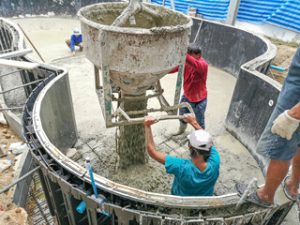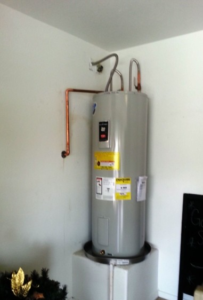Foundation Repair Nashville is typically less invasive than home replacement and allows you to stay in your home while it is being repaired. Your contractor will develop a plan to add support to areas of your foundation that are unstable or have cracks in them.

There are a few ways to do this, but they all involve raising your home back up to its original level. This will close cracks, re-align doors and windows, and restore functionality to your home.
When cracks form in your foundation, they often signal a serious structural problem. It’s important to inspect them regularly and take action as soon as possible, to prevent more serious damage and protect the value of your home. Whether the cracks are wide, vertical, diagonal, or growing over time, there’s a lot they can tell you about your foundation’s stability and the cause of the cracking.
Vertical cracks, which run up and down or slightly diagonally, are usually the result of settling and shrinkage in concrete. They’re typically not a major concern, but it’s wise to monitor them and make repairs as needed. Wider cracks, especially those that run horizontally or are broader at one end than the other, indicate serious structural problems and should be assessed by a professional as soon as possible.
Diagonal cracks that appear along the foundation wall are most often caused by differential settlement in different parts of the house. These cracks are usually a sign of a more serious problem, such as a sinkhole or sever soil movement, and should be repaired immediately.
A professional contractor can repair most types of foundation cracks by injecting epoxy resin into the cracks. A specialized kit is available that includes epoxy resin, injection ports, and applicators. These kits are easy to use and allow for fast, effective repairs. If the cracks are severe, it may be necessary to dig out and fill in the affected area of the foundation to stabilize it.
Another way to repair foundation cracks is to install helical and push piers to support the foundation. This is a more involved process and requires a thorough inspection of the foundation, but it can be very effective in preventing further cracking and stabilizing the foundation. These systems can also be used to repair basement foundation leaks. Water can be a huge problem for your home’s foundation, causing rot, mold, and other problems. Keeping trees and shrubs away from the foundation, keeping up with regular maintenance, and taking swift action when cracking occurs can help prevent these issues from occurring.
Water Invasion
Water invasion is a homeowner’s silent nightmare that gradually undermines the integrity of a home’s foundation. Unchecked, it can cause major structural issues and costly repairs. Moisture mitigation is key to preventing this dangerous problem.
One of the most common causes of moisture invasion is a lack of proper drainage. Homes with clogged gutters and downspouts can create over-saturation of soil that can lead to foundation problems. This is especially true in clay soils, where over-saturation leads to expansion and contraction that can cause foundation cracking.
Another source of moisture invasion is plumbing leaks. If you suspect a leak in your basement, you should call a professional immediately to fix the issue and prevent further damage. If left unchecked, a leak can cause mold and mildew growth in the basement that can further weaken the materials in your foundation.
Some natural disasters, such as floods and earthquakes, can also damage your foundation by creating hydrostatic pressure against it. This pressure can force water through cracks in your foundation, expanding them over time. This can lead to serious structural problems and even collapse the entire structure of your home.
During drought conditions, water seepage into your home’s foundation can also become an issue. It’s important to keep the area around your foundation moist, so the soil doesn’t dry out and leave the foundation susceptible to movement. One easy way to do this is by running a drip irrigation system that can add moisture to the soil on a regular basis.
In addition, it’s important to plant trees and shrubs that are well away from your home’s foundation. This can help avoid tree roots from seeking out moisture and causing damage to the foundation. If you have existing trees, get a professional’s opinion before they are pruned close to your foundation.
Generally, if you see a crack that is wider than 1/10 of an inch, it’s a good idea to have it inspected by a professional. Any crack that is accompanied by significant moisture or is getting wider over time should also be inspected. If the crack is found to be structural, your contractor may suggest piers as a repair solution.
Structural Issues
The foundation of a home is essential to its integrity. Without a strong, stable base, the entire structure could collapse. Unfortunately, many homeowners ignore warning signs of foundation problems and fail to take them seriously until it’s too late. The good news is that structural issues can be repaired by experienced professionals using various methods, such as underpinning or helical piers. Understanding the root cause of the problem will help you choose the right repair method and prevent future damage.
One of the most common causes of foundation problems is soil movement or shifting. This can be due to natural processes, poor construction practices, or changes in moisture levels over time. For example, expansive clay soils can swell with moisture and shrink during dry periods, leading to foundation settling. Poor drainage can also lead to foundation issues, causing water to build up underneath the house and creating hydrostatic pressure. Tree roots growing too close to the foundation can disrupt soil and create voids under the home.
Regardless of the cause, the first sign of foundation problems is usually cracks in walls or ceilings. These cracks may be hairline or wider and can vary in length depending on the severity of the settling. Other warning signs include uneven floors and doors or windows that stick or won’t open easily.
A professional inspection should be performed as soon as possible to assess the problem and determine the best course of action. Prompt action can prevent the problem from worsening, saving you money and reducing stress on your property.
Once the assessment is complete, the repair process can begin. First, any loose or deteriorated concrete must be removed from the affected area to prepare the surface for new repairs. Then, a bonding agent is applied to ensure the repair material adheres well to the existing foundation.
After the surface is prepared, steel or concrete piers are installed to provide additional support for the foundation. Helical piers are also an option, wherein hydraulic jacks are attached to a steel rod that is drilled into the ground and then used to lift the foundation. This is an excellent option for cases where the foundation has become severely unstable, as it provides a strong, long-lasting solution.
Cost
The cost of repairing foundation damage can be significant. However, it is often worth it. Foundation repair solutions provide long-lasting stability and increased home value. In addition, addressing issues like uneven floors and doors that no longer close can save you money in the long run by reducing energy costs.
When considering whether or not to invest in foundation repairs, it’s important to consider your neighborhood’s market trends. If you live in an area where homeowner pride is high and homes are selling quickly, investing in foundation repair may pay off. If, on the other hand, your neighborhood is in a downturn and many of the homes around you are turning into rentals, it might make more sense to wait until market conditions improve.
If you decide to go ahead with the repair, your professional will evaluate the damage and prepare a scaled footprint drawing of your property. They will then discuss the results of your evaluation with you and answer any questions you may have.
Depending on the severity of your problem, experts can use various methods to repair cracks and other structural damage. Epoxy and polyurethane injections are effective for hairline cracks, while hydraulic cement is good for more serious repairs. In some cases, excavation and reconstruction is necessary to fix severe bowing walls.
Once your foundation has been repaired, small cracks may reappear as the walls and joists adjust to their original position. These are common and nothing to worry about, but they can be repaired with caulking or putty. Experts will also tamp dirt back down, rough grade, and replace grass as needed.
If your foundation is sinking, it can cause other problems such as misaligned doors and windows and off-kilter trim. By restoring the home to its original elevation, professionals can correct these problems and re-align everything to where it should be.
Once the job is complete, it’s important to disclose foundation repairs to potential buyers and provide them with a third-party Professional Engineering report. This will help ensure that the repairs are completed to the standards set by an Engineer and protect your home’s resale value.



